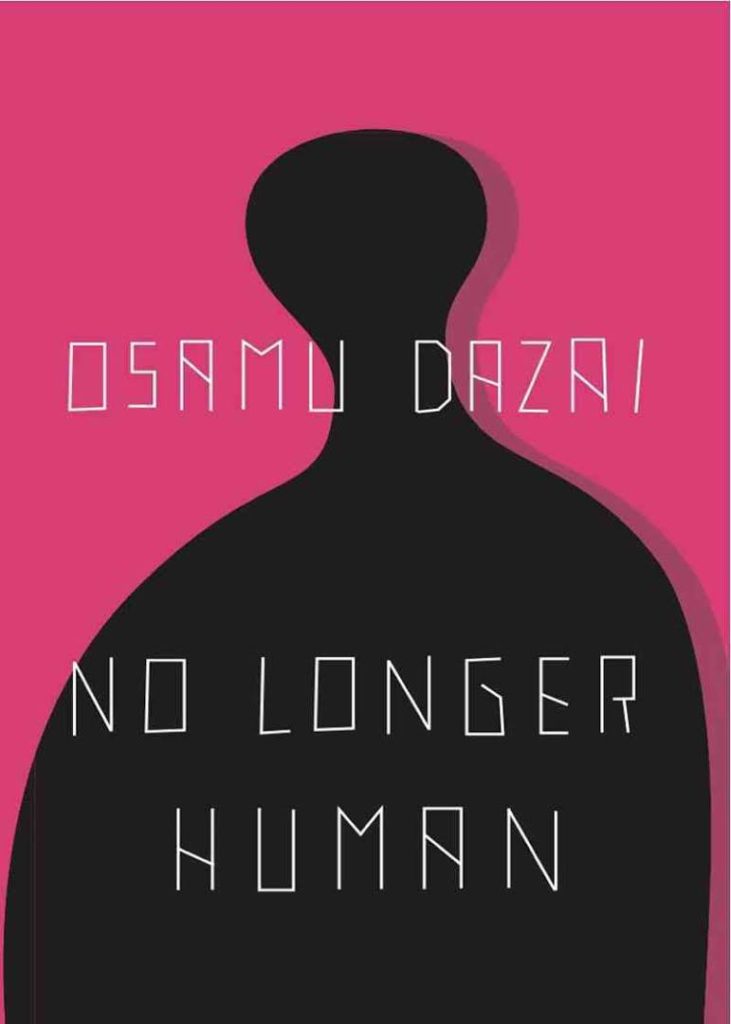
In film, extreme close-up shots are used to discomfit viewers and convey to them, in often painstaking detail, the psychology of the character in focus. Osamu Dazai’s No Longer Human is a kind of literary extreme close-up of the life of Oba Yozo, a young boy of promise, born into a wealthy family, who gradually descends into alcoholism and morphine addiction. At the novel’s outset, an unnamed narrator informs us that he has discovered three notebooks and three photographs corresponding to three different periods in Yozo’s life, and the bulk of what follows is Yozo’s autobiography, his personal account of his own alienation and gradual degradation, told to us in harrowing detail.
The first of the three photographs describes to us a young boy of about 10, “surrounded by a great many women,” whose appearance disturbs the unnamed narrator. “[T]he more carefully you examine the child’s smiling face the more you feel an indescribable, unspeakable horror creeping over you,” he tells us. He sees not a happy, innocent young child, but “a monkey,” a “grinning monkey-face,” without even the “suggestion of a smile.” “I have never seen a child with such an unaccountable expression,” he tells us. And then, of course, we meet that child, via Yozo’s own recollections in the notebooks, where immediately he affirms the narrator’s judgment of himself as being inhuman: “Mine has been a life of much shame. I can’t even guess myself what it must be to live the life of a human being.” As a child, unable to relate to his peers or even his family, he deliberately acts the clown as a means to garner approval. “It was the last quest for love I was to direct at human beings.” His buffoonery pleases most people, most of the time, but he lives in dread of being discovered as an impostor:
I have always shook with fright before human beings. Unable as I was to feel the least particle of confidence in my ability to speak and act like a human being, I kept my solitary agonies locked in my breast. I kept my melancholy and my agitation hidden, careful lest any trace should be left exposed. I feigned an innocent optimism; I gradually perfected myself in the role of the farcical eccentric.
Eventually, of course, this disguise fails him, and he is thrown back on himself, on a self that imprisons him with its outsized anxieties. “All I feel are the assaults of apprehension and terror at the thought that I am the only one who is entirely unlike the rest. It is almost impossible for me to converse with other people. What should I talk about, how should I say it? –I don’t know.”
Despite his inner anxieties, Yozo is described by character after character as physically attractive, and indeed women are constantly taking an interest in him, falling in love with him, and scratching at the innermost secrets of his suffering. Recall the description of the young Yozo in the photograph, “surrounded by women” – he himself will qualify that description in a later passage, in terms that bear repeating:
I have always found the female of the species many times more difficult to understand than the male. In my immediate family women outnumbered the men, and many of my cousins were girls. […] I think it would be no exaggeration to say that my only playmates while I was growing up were girls. Nevertheless, it was with very much the sensation of treading on thin ice that I associated with these girls. I could almost never guess their motives. I was in the dark; at times I made indiscreet mistakes which brought me painful wounds. These wounds, unlike the scars from the lashing a man might give, cut inwards very deep, like an internal hemorrhage, bringing intense discomfort. Once inflicted it was extremely hard to recover from such wounds.
He is telling us, I think, in an offhand manner, something extremely important. Yozo – like his author, who was the eighth child in a large family, living in a manor home that housed over 30 people – is estranged from his father, and raised in the company of women. His earliest sensations of being guilty without understanding his crime, of being unable to suss out the cause-and-effect of his “indiscreet mistakes,” caused him many wounds, but wounds “unlike the scars from the lashing a man might give.” The disapproval of men harms the body; the disapproval of women wounds the soul.
No Longer Human charts Yozo’s decline in painstaking detail, from his childhood failures to bond with family or friends to his adolescent flirtation with Marxism – that great chasm into which so many lost young people throw themselves, to a failed suicide attempt and, later, alcoholism and morphine addiction. In tone and structure it resembles Dostoevsky’s Notes From Underground, though the only explicit mention of Dostoevsky is to Crime And Punishment, on the subject of redemption, but the novel’s conceit put me in mind of another famous confession of personal failure, T.S. Eliot’s “The Love Song of J. Alfred Prufrock,” which begins with an invocation from Dante that might equally be appended to the opening of Dazai’s great novel:
If I but thought that my response were made
to one perhaps returning to the world,
this tongue of flame would cease to flicker.
But since, up from these depths, no one has yet
returned alive, if what I hear is true,
I answer without fear of being shamed.
Both Eliot and Dazai want their readers to know that the secrets they are about to be privy to are shared only with the greatest reluctance. In this sense, too, No Longer Human is tragically autobiographical, for in the same year it first appeared in Japan, 1948, Dazai also committed suicide, hurling himself into a canal with his girlfriend. Their bodies weren’t discovered for days.